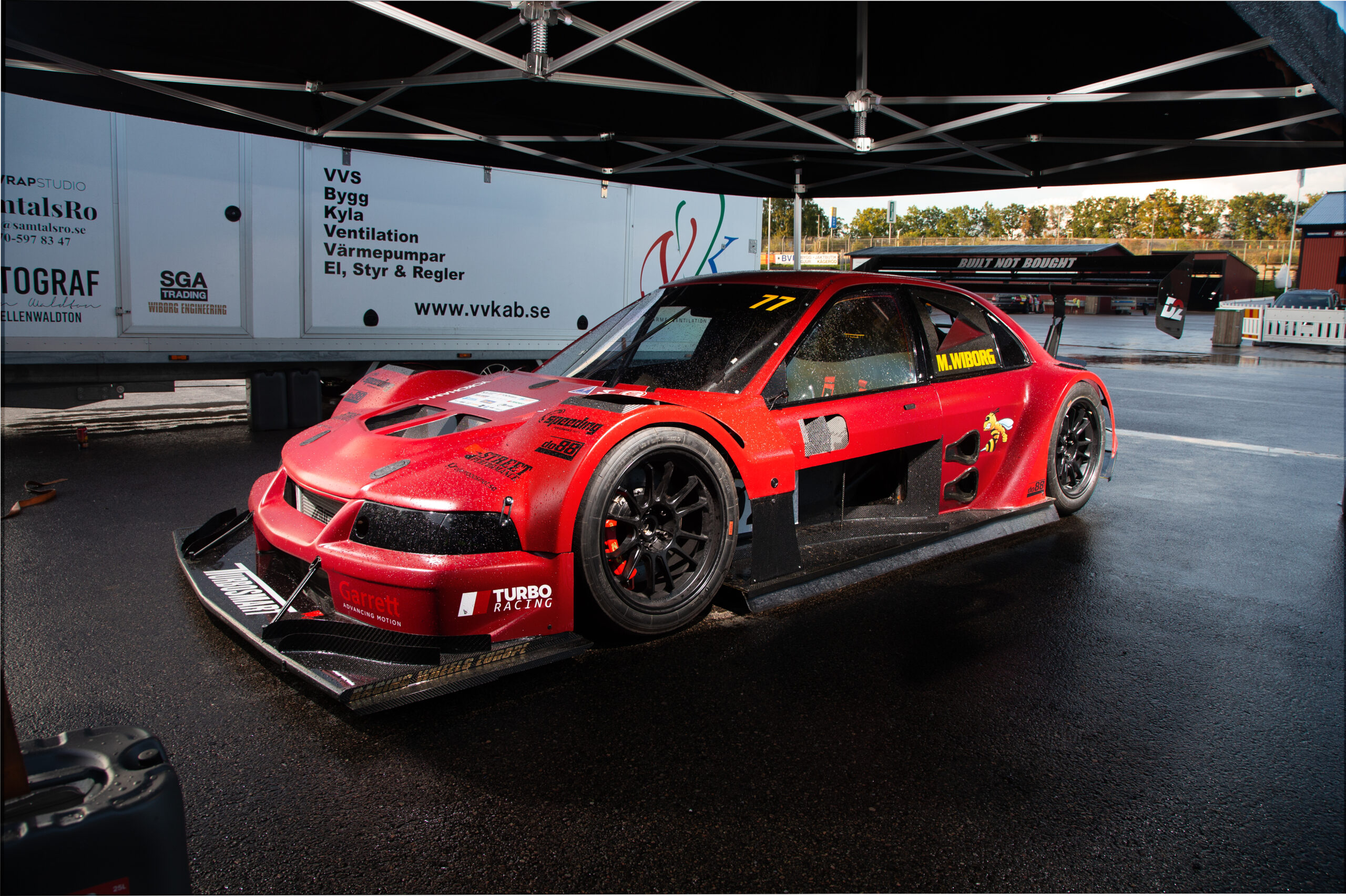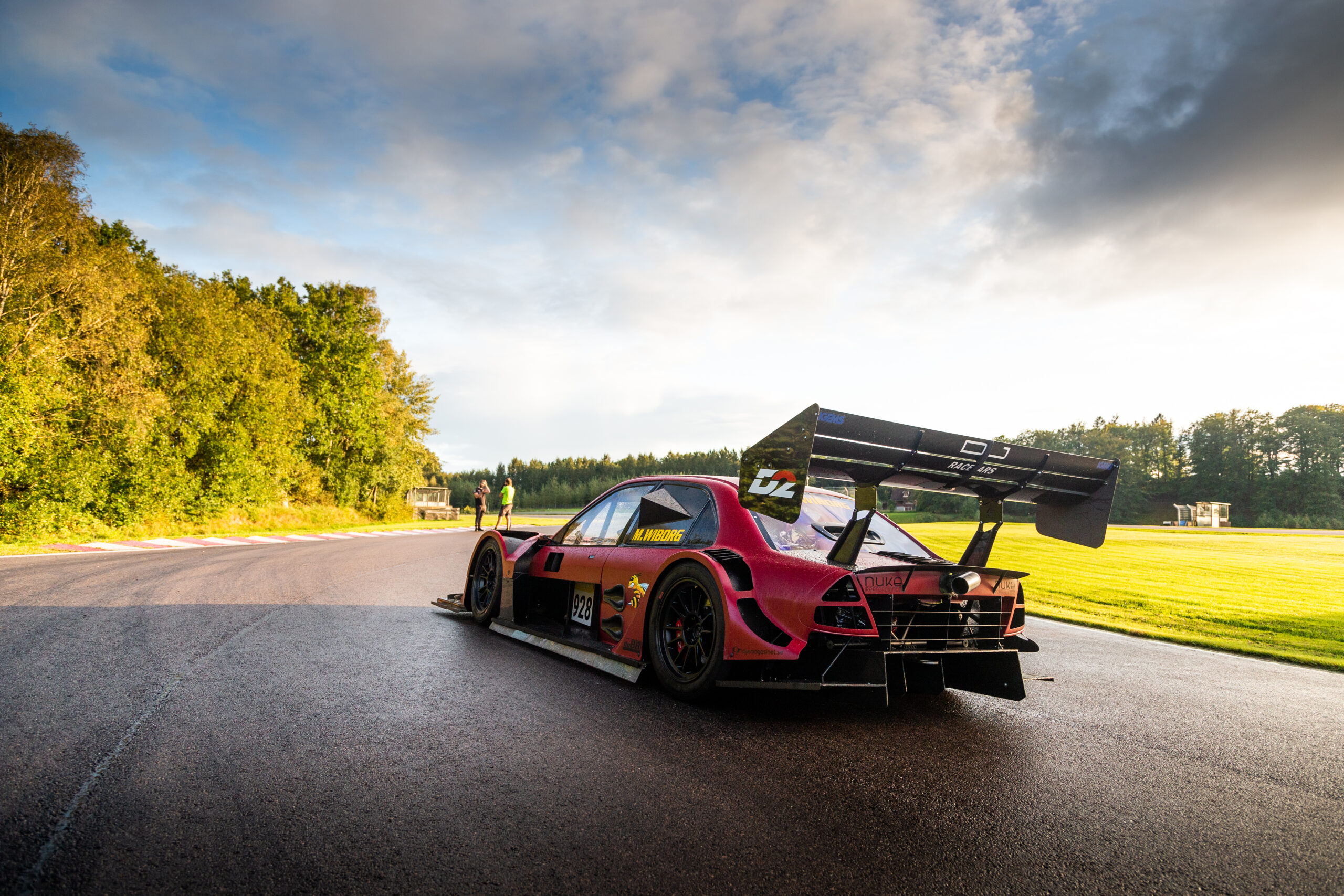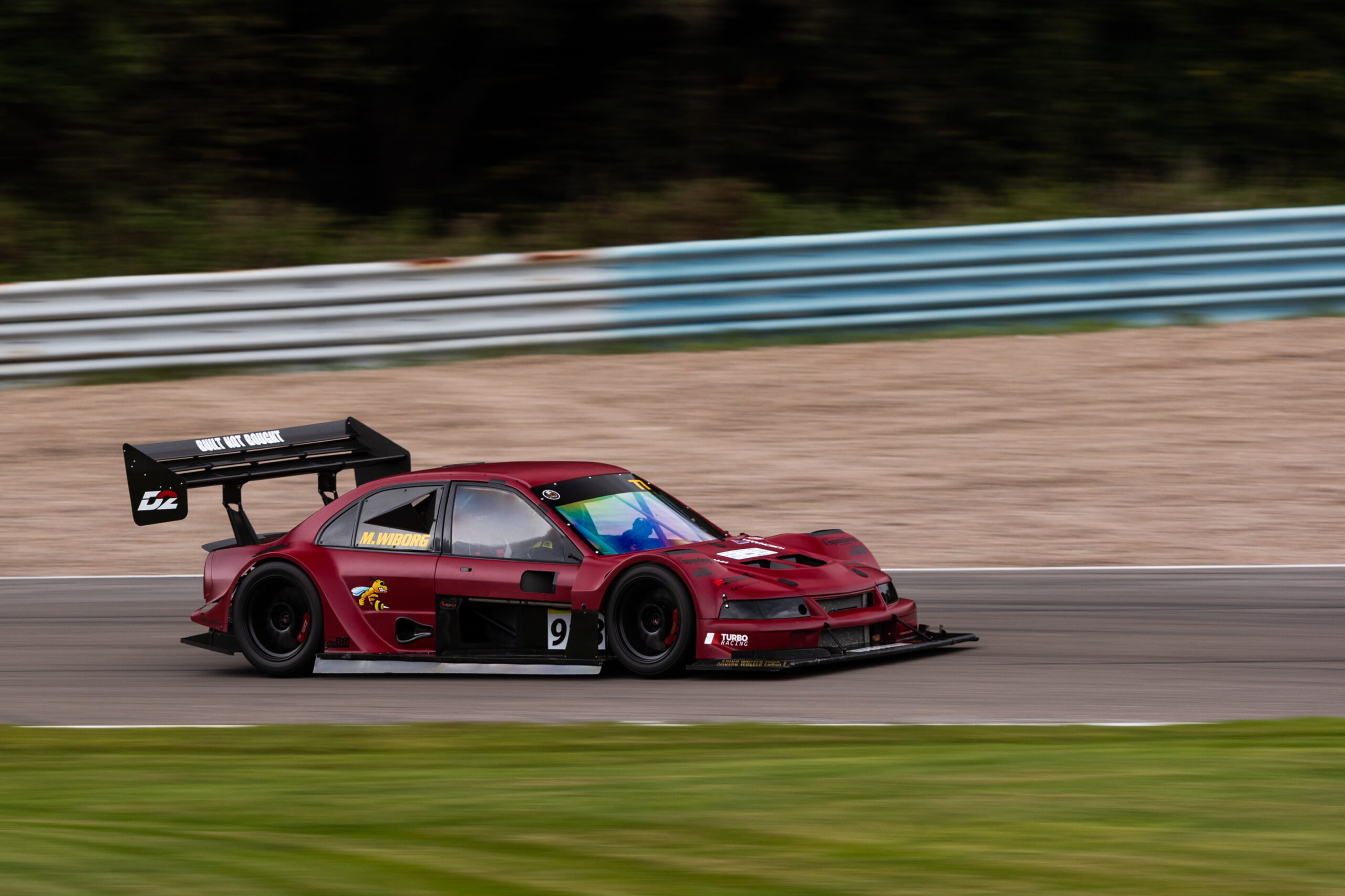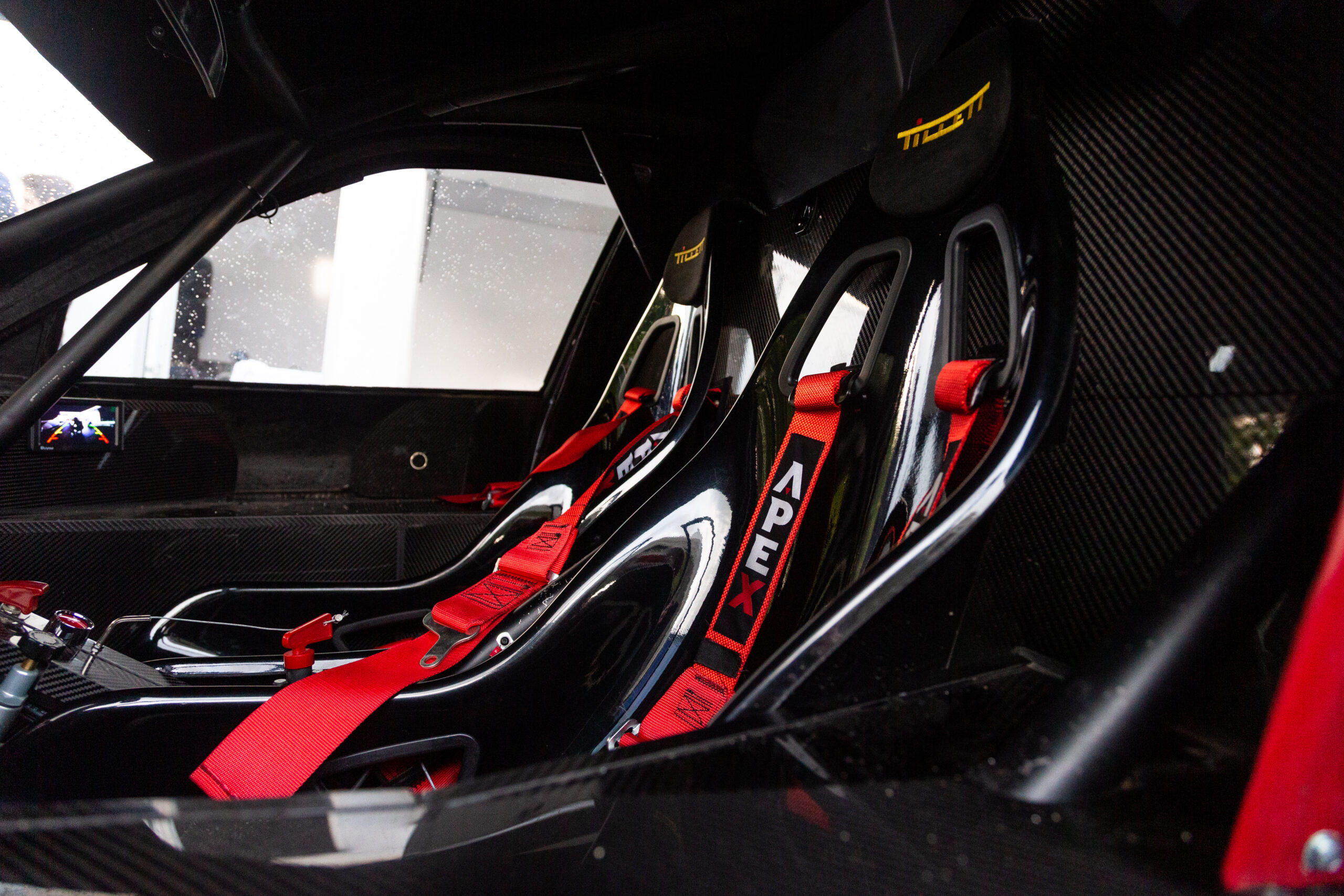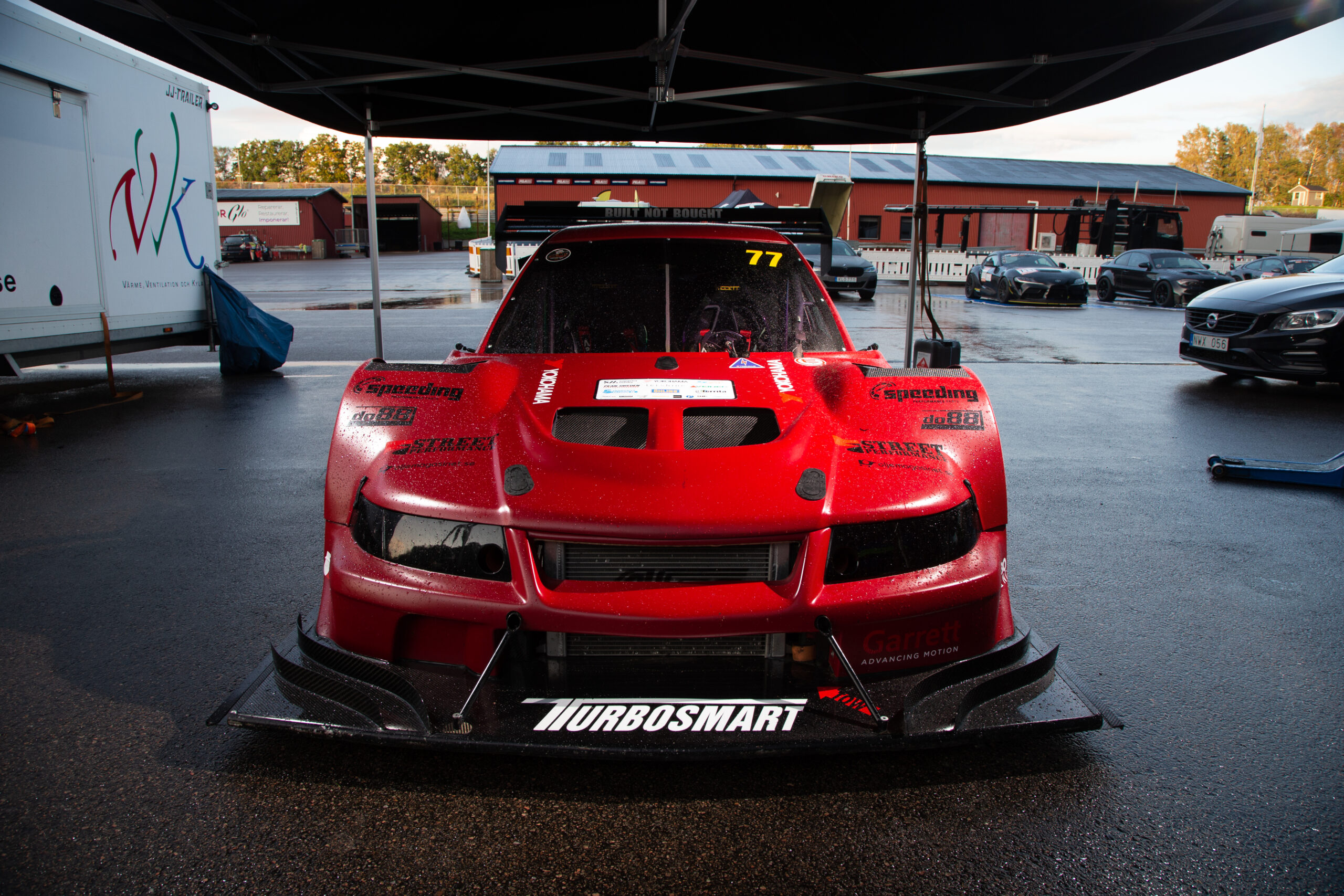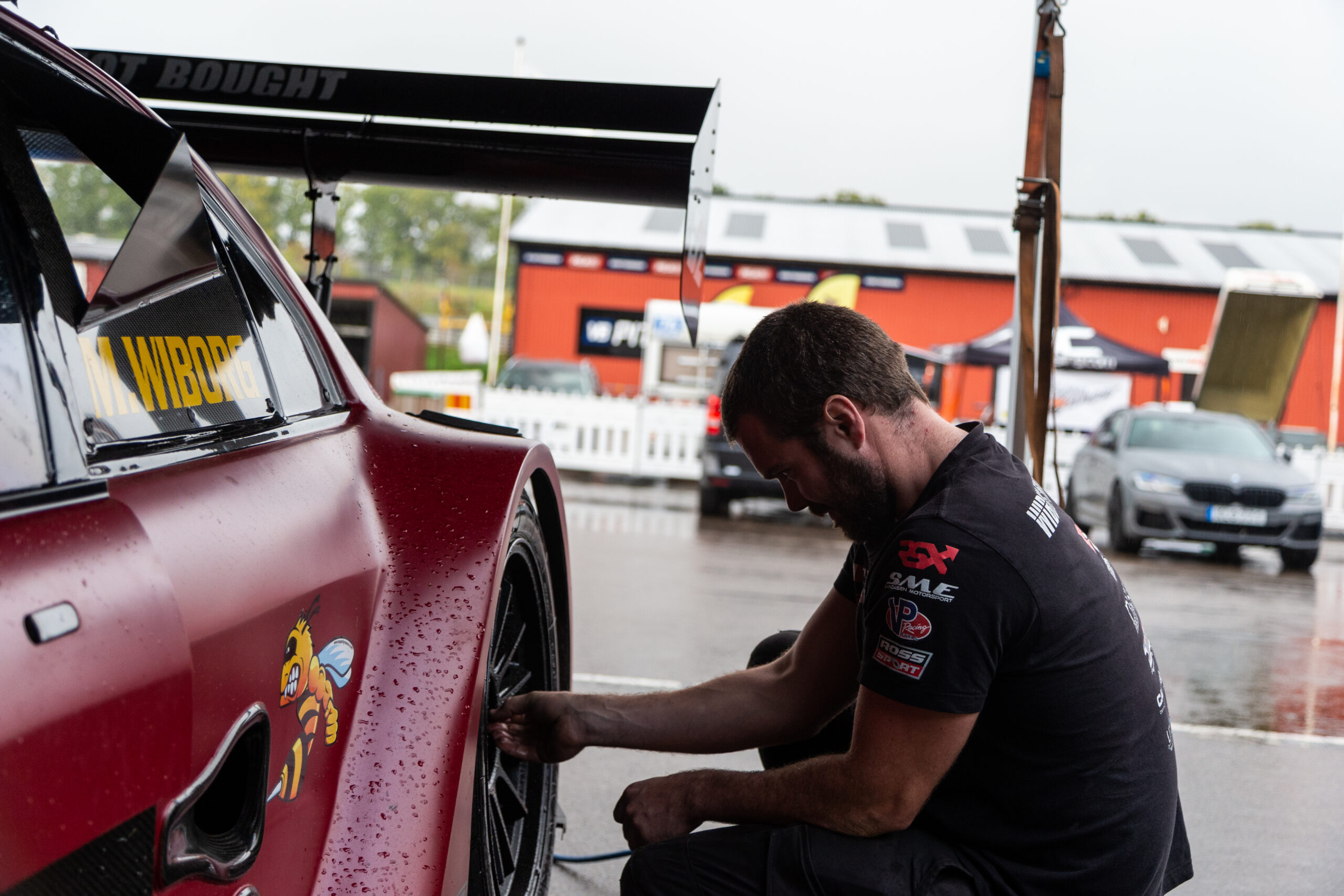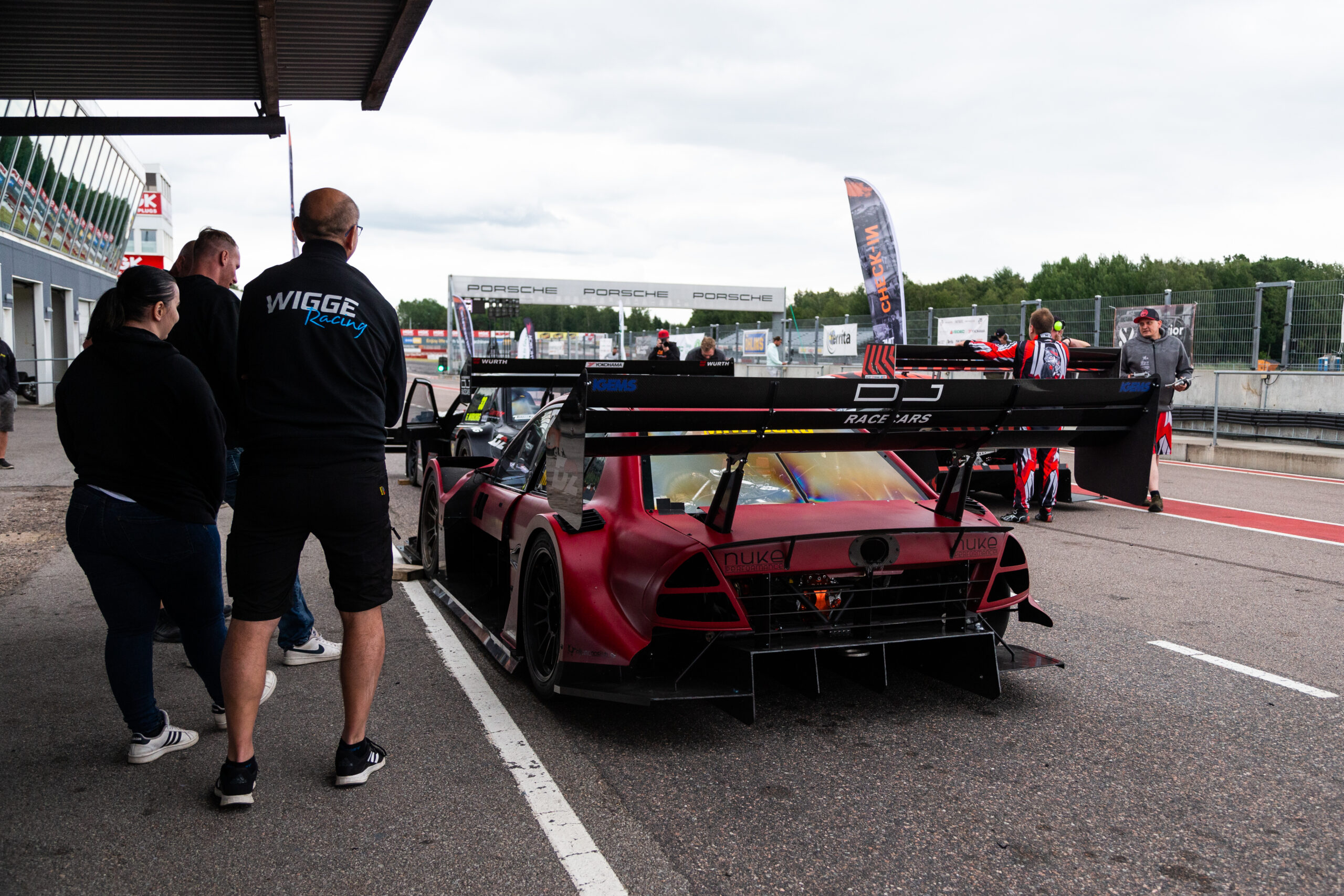Words: Martin Hansson and NZPC Photos: Martin Hansson
Wiborg — sounds familiar, doesn’t it? It should, because back in #295, we paid a visit to Wiborg Engineering to explore their contraption, the Wiborg Evo 6 Silhouette 2.0. Guess what? The brothers are back, this time with a car that, if you squint really, really hard (Clint Eastwood-level of openness of the eyes), kinda looks like an old Mitsubishi Evo VI. This new thing, dubbed the Wiborg Evo Silhouette 2.5, shares the engine block and some body lines with an original Evo. The rest is from the mad, mad place that is the inside of Mikael Wiborg’s noggin.
Delving into the roots of this project, it becomes evident that the Evo Silhouette 2.5 is not just an evolution but a deliberate departure from its predecessor. Evolutions were once the bread and butter for the Wiborg team, so it only made sense to continue with the platform and prove its dominance even further. However, switching from all-wheel drive to rear-wheel drive was a big change. This goes back as far as when the previous car was being built, and the challenges with weight came into play — both the overall weight and distribution. But how much can you do when you have a set wheelbase and transverse engine? Not a lot, as it turned out. The good thing with this is that it’s built with nothing to do with the Mitsubishi Evo other than the name and engine block (at the time of writing, that is). This change on its own freed up a lot of weight (around 100kgs was saved) and made it easier with aero modifications, as it doesn’t have to house the lump of an engine anymore.
Mikael Wiborg explains further, “On one side, the V2.0, already being the second interaction of having an all-wheel drive car based on an Evo drivetrain layout, is already developed very far concerning the restrictions with having a front-mounted transverse engine. On the other hand, we would like to get a mid-engine, rear-wheeldrive platform to collect valuable data from such a setup before deciding what a potential V3.0 would look like.” The engine is a stock 4G63 block but turned 90 degrees and mounted to a transverse gearbox in the middle. Yes, you read that right — it has a mid-mounted engine. One thing they quickly found out once they started pushing was that maybe this engine wasn’t made to be in this orientation, and certainly not to withstand the level of side acceleration this car is capable of generating.
The Wiborg Engineering team is Evo through and through. With other common cheaper four-cylinder options out there, we had to know why the 4G63 remains. If it’s anything like the New Zealand market, something like a Honda K-series is more readily available. “Firstly, the four-cylinder 4G63 platform offers an incredible weight-to-power ratio, especially considering we run a billet aluminium block,” says Wiborg. “The K-series would be a very similar platform as such with a four-cylinder with similar stroke and piston diameter and total volume, but we also started out as somewhat of Evo experts, and naturally, the 4G63 was thus the baseline amongst these four-cylinder engines.” Although we’d love to see the Evo overseas, we’re told there are no plans yet, with the international regulations differing too far from those at their local circuits. We can’t help but wonder what this machine would do around Sydney Motorsport Park at the Yokohama World Time Attack Challenge.
On the choice of a mid-engine RWD setup with two seats, Wiborg emphasises, “Being a mid-engine RWD, there was less restriction on space inside the car to start with compared to the AWD V2.0, and also this vehicle is intended and used as a demo vehicle running sponsors and partners at full attack from time to time.”
To produce the power the team wanted, the same Garrett GTX3584RS turbocharger was installed to provide boost pressure. As the team knows, the turbocharger works well for the power levels and is still readily available; the switch to a more modern turbocharger wasn’t required at this stage. Considering how fast V2.0 has proven, we had to ask, when is the high boost 1000hp tune getting the green light with V2.5?
“The question is always when it’s needed and having the right conditions,” Wiborg replies. “Currently, for the V2.0, there have not really been any real threats from competitors in Europe pushing us all the way. So let’s say the V2.0 will get the highest boost level the day it’s needed, but it will for sure taste some real boost levels during 2024, although maybe not the highest. Current estimates are that it should be on par with the V2.0 lap time-wise. Then if it’s 0.5 seconds faster or slower in the end, that we will have to see at the track.” As you can imagine, in Europe access to OEM manufacturers and aero specialists is far easier than it is in our little corner of the world. Wiborg mentioned they have OEM automotive level specialists for support with their aero from automotive engineers and experienced aerodynamic engineers. However, they’re yet to go down the wind tunnel testing road, as the expense is astronomical.
The Wiborg Evo Silhouette V2.5 emerges as a bold testament to automotive ingenuity, marked by its departure from convention and embracing a mid-engine rear-wheel-drive setup. The weight savings, aero enhancements, and unwavering commitment to the 4G63 engine showcase the Wiborg team’s dedication to pushing boundaries. While international plans remain uncertain, the tantalising prospect of a high-boost 1000hp run adds an exhilarating dimension to this evolving story. As the Wiborg saga continues, we eagerly anticipate the next chapter, or V3.0!
_________________________________________________________________________________________________
This article originally appeared in New Zealand Performance Car issue 306





